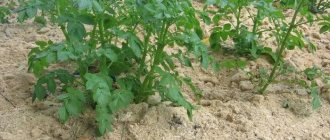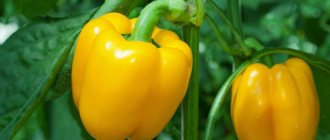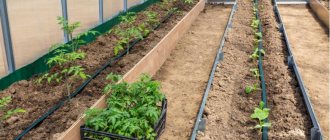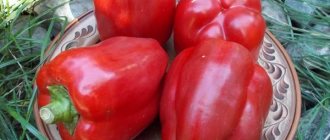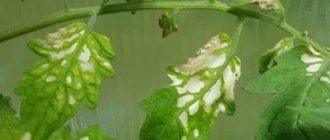For many, gardening is an exciting hobby and an opportunity to spend time productively. Using simple and inexpensive agricultural techniques, it is quite possible to achieve amazing fertility. For example, with proper care and creation of optimal conditions in a greenhouse, the yield of tomatoes varies from 11 to 26 kg per bush.
But a high harvest is the result not only and not so much of physical labor, but rather of a rational approach to the use of land.
In this article we will talk about one of the ways to increase the yield of tomatoes - mulching, including sawdust.
What is mulching and why is it necessary?
Mulching is the covering of the soil surface with mulch, an organic or inorganic material that has a positive effect on crop yields.
This agricultural technique:
- improves soil properties;
- protects it from drying out and weathering;
- enriches with useful substances;
- reduces weed growth;
- strengthens the root system of plants;
- reduces time and effort for plant care.
How to Use Mulching as Fertilizer
Mulch from grass and other organic materials gradually decomposes, under the influence of microorganisms turning into humus and fertilizing the soil. The type of material used determines which microelements the soil will be enriched with.
For example, pine mulch slightly increases the acidity of the soil, which is useful for crops such as sorrel, chicory, potatoes, radishes, tomatoes, carrots, and pumpkin.
Purpose and technology
There are 3 methods of mulching: traditional (loosening), organic and inorganic.
Each has its own advantages:
- Traditional, or loosening . After watering or rain, it keeps the soil moist and cool longer, reduces moisture evaporation, destroys weeds, and increases the supply of oxygen to the soil.
- Organic, or covering with organic materials. Straw, grass clippings, compost, humus, sawdust and wood chips, peat, pine needles and even old newspapers and cardboard are used as organic matter. This method protects the soil from drying out and weeds, increases fertility, prevents the proliferation of slugs and pests, and structures the soil.
- Inorganic, or covering with inorganic materials. These include films, nonwoven materials, pebbles, crushed stone, gravel, expanded clay, and coarse sand. The method is used to protect against drying out, weeds, pests and to prevent rot (fruits and berries do not come into contact with the ground). This mulching maintains the loose structure of the soil.
When is it carried out?
The main mulching is carried out in autumn and spring.
In the fall, the soil is mulched after the harvest is complete, in early to mid-October. The beds are covered, without compacting, with manure, humus, and fallen leaves in a layer of 5-8 cm. In the spring, such mulch is removed onto a compost heap or embedded in the ground by digging or loosening.
Spring mulching is carried out after the soil has warmed up within +12…+14°C.
Effect
It is worth warning immediately that there will be no immediate results. Several months must pass before the composition and quality of the soil changes.
The main effect of mulching is increasing productivity . The roots of the plant are reliably protected from drying out and parasites. At the same time, they do not need to fight for nutrients with weeds, because they cannot germinate due to the dense layer of sawdust.
Tomato leaves do not come into contact with the ground, therefore, a number of bacterial and fungal diseases can be excluded. In general, the effect of mulching is more positive. Tomato bushes are stronger, and the time required to care for them is significantly reduced.
Mulching tomatoes - advantages
It is useful to mulch tomatoes in the greenhouse and when planting in open ground.
This technique:
- protects roots from drying out and overheating;
- destroys weeds;
- prevents diseases that occur when plant parts come into contact with the soil;
- saves time and effort on care;
- reduces the frequency of watering;
- enriches the soil with useful substances (if organic mulch is used);
- accelerates the ripening of tomatoes by 7-10 days;
- increases productivity up to 30%.
In open ground, tomatoes are mulched when the soil is well warmed up and there are no longer night frosts.
Before covering the beds with mulch, the soil is well loosened or dug, watered, and weeds are removed.
The soil is covered with organic mulch after planting the seedlings. The layer thickness is made 3-6 cm, while leaving a small space around the stem necessary for watering. Artificial materials are first laid out and stretched on the surface of the beds, and then holes are made in them for planting and watering.
In heated greenhouses and greenhouses, mulching is carried out at any time of the year. In unheated ones - after the earth has warmed up. Otherwise, the process is similar to mulching in open ground.
Peculiarities
Experienced gardeners speak positively about using sawdust as mulch for tomatoes. Many note an increase in yield by 20–30% and an acceleration of the ripening process by 10–12 days. It is also worth saying that the method is suitable for both outdoor cultivation and greenhouses.
There are a number of nuances that need to be taken into account to achieve a good result. If you do not follow the entire process technology, the effect will be rather negative. Next you will read about these nuances, including whether it is possible to mulch tomatoes with fresh sawdust.
- It is important to mulch only warm soil.
- The soil must be treated with nitrogen fertilizers.
- It is necessary to select the correct size of wood waste. You should not use too large sawdust for mulching tomatoes; they are more suitable for trees in the garden.
- Use fresh sawdust for mulching with great care. It is important to remember their impact on soil quality.
Mulch made from pine sawdust is a convenient and cheap material that is suitable for tomatoes, especially if they grow on clay soils. However, you should remember the possible negative effect of such fertilizer in order to eliminate all undesirable consequences.
How to mulch tomatoes: types of mulch and application
The general principles of mulching as an agrotechnical technique are also applicable for the cultivation of tomatoes; there is no special “tomato” mulch. However, when using generally accepted materials, some nuances must be taken into account.
Use of synthetic covering materials
The most common are films and nonwovens. Let's look at them in detail.
Polyethylene film
The film for mulching tomatoes should be red, opaque and durable to suppress the growth of weeds. You need to cover the soil under the tomatoes tightly; this will increase the soil temperature by 1-2ºC.
When using such material in greenhouses, air humidity is significantly reduced due to low evaporation of moisture from the soil. This prevents the development of fungal diseases.
Before laying the film, feed the plants with complex fertilizer or sprinkle with compost.
Keep in mind that the film does not allow air to pass through; in hot weather the soil overheats, which can lead to the death of plants. Therefore, the film is removed from time to time to ventilate the beds.
Nonwovens
Non-woven fabrics (spunbond, lutrasil) are considered “breathable”; they allow air and water to pass through, but at the same time they retain heat well and protect plants from freezing. The material chosen is black. When used in greenhouses, it will last from 3 to 5 years, protecting tomatoes from weeds, pests and fungal diseases.
Use of organic materials
Organic mulching materials have proven themselves well in growing tomatoes. They are inexpensive (and often free) and quite accessible. Let's look at some of them.
Straw
Straw is an excellent heat insulator; during cold nights it protects the soil surface from freezing. Under the straw mulch, the soil is moist and loose. A layer of straw on the beds is a good prevention of tomato diseases: early rot, anthracnose, leaf spot. In addition, by slowly rotting, straw contributes to soil fertility.
The disadvantage of straw mulch is that a thick layer harbors rodents and pests. Therefore, the straw needs to be removed and renewed from time to time.
Compost
Mulching tomatoes with compost is very effective. Any type of organic waste is suitable for it. For mulching, a 3 cm layer of compost is sufficient.
However, compost requires careful handling. It is better to mix it with other types of mulch, as it is quickly processed by worms.
Freshly cut grass or hay
Freshly cut grass and weeded out young weeds are often used to cover the soil. The grass decomposes quickly, so the layer must be thick so that after settling its height is at least 5 cm. At the same time, the soil is abundantly enriched with nitrogen and microelements. The rotting process attracts worms, which further loosen the soil.
The disadvantage of this type of mulch is its rapid decomposition; the grass layer will have to be renewed frequently.
Be sure to dry the weeds and grass in the sun before laying them in the beds to get rid of parasitic insects.
Sawdust
Sawdust is another available type of mulch. Fresh sawdust retains moisture in the soil and improves its structure. Sawdust takes a long time to decompose; it is best to use it by mixing it with compost.
We will tell you in more detail about whether it is possible to mulch tomatoes with sawdust in a greenhouse in the following sections of the article.
Organic materials
Organic mulch is made from nature. Most gardeners choose them because they not only protect plants from weeds, diseases, and cold weather, but also enrich the soil with essential minerals, including nitrogen. In fertile soil, mulch decomposes faster than in depleted or depleted soil.
Compost
One of the most effective types of mulch is compost, which is also a nitrogen-containing fertilizer. But in the case of compost, the main thing is not to overdo it. It is applied with caution, since there is a high probability of “overfeeding” the tomatoes with nitrogenous compounds, which will not benefit the yield.
For better effect, use it in a mixture with other components. The best “companion” for compost is sawdust. To decompose the latter, a large amount of nitrogen is required, which they mercilessly pull from the soil. The components neutralize each other, and the plants receive only benefits.
The disadvantage of compost is the rapid disappearance of the mulch layer, since worms quickly process it. There is a need to add a new layer throughout the growing season.
Cut grass, weeds
When grass decomposes, it nourishes the soil with microelements and increases its fertility, but there is a possibility of tomatoes being infected by insect pests that often live on weeds.
Therefore, it is first dried well in the sun, turning it over several times. Under ultraviolet radiation, most microorganisms die. The grass that is suitable is one that has not yet had time to set seeds. Otherwise, when dried, the seed material will ripen and germinate.
The ideal option is to mow the grass during flowering. It is during this period that it accumulates the most macro- and microelements, which then pass into the ground.
The layer of mowed grass on the bed should not exceed 3 cm. As soon as the mulch has dried, add a new layer. If you lay a higher layer of grass, then when watering it will begin to cake and impede the passage of oxygen to the root system of the plants.
Sawdust, wood chips, tree bark
Without additional preparation, fresh materials cannot be used for mulching tomatoes, since when they decompose, they draw a large amount of nitrogen from the soil, which negatively affects the growth of seedlings and the amount of future harvest. Before use, sawdust is soaked in a solution of nitrogen fertilizers, for example, in a 5% urea solution.
Tree bark and wood chips are left to “age” in the open air for a year. After lying for a year, they will not oxidize the soil and will only benefit the tomatoes.
When purchasing sawdust (bark or wood chips), ask what tree it comes from. Wood waste from coniferous trees greatly increases the acidity of the soil, so dolomite flour or slaked lime is added along with it.
Straw, hay
One of the best types of mulch is cereal straw. It prevents tomatoes from becoming infected:
- rot;
- leaf spotting;
- anthracnose.
In addition, straw is a heat-insulating material that protects the soil from hypothermia. Under it, the moisture slowly evaporates, the soil remains moist and loose for a long time.
Rodents often live under the straw. Therefore, it or the hay is turned and removed from time to time so that the mouse population in the area does not grow.
Needles and fallen leaves
You cannot immediately lay pine needles or fallen leaves on the garden bed. First, they are well dried in the sun. Then the collected foliage must be checked for the presence of parasites, which like to hibernate in it.
Before use, pine needles are mixed with chalk or dolomite flour to avoid soil acidification. The fallen leaves are well crushed. Then the foliage will not cake, and the roots of the plants will receive a sufficient amount of air.
Peat
Peat strongly oxidizes the soil, so it is not used in its pure form. It is mixed with other materials:
- chalk;
- dolomite flour;
- slaked lime;
- compost.
Use any substance that can neutralize the acidity of peat.
Mulching tomatoes with sawdust
Sawdust is suitable for mulching any type of soil.
Sawdust mulch has many useful properties:
- retains moisture in the soil, regulates water balance;
- prevents weed growth;
- protects from contamination;
- repels tomato pests;
- improves soil structure;
- accelerate fruit ripening by 7-10 days;
- increases productivity.
In addition, woody organic matter is more durable than grass or straw. This mulch does not require frequent updating. Sawdust can be used to mulch tomatoes both in the greenhouse and in the open ground. The technique is especially effective in areas with prolonged droughts.
However, sawdust also has its disadvantages. Fresh sawdust increases the acidity of the soil and, when decomposed, absorbs nitrogen from the soil; sawdust from coniferous trees can negatively affect the microflora of the beds.
However, knowing all the nuances of using sawdust mulch for tomatoes, negative effects can be successfully avoided.
How to properly mulch tomatoes in a greenhouse with sawdust - nuances
When mulching with wood material, follow a number of simple rules:
- Use only well-dried material. Wet sawdust cakes, which can cause tomatoes to become damp.
- Before laying on the beds, moisten them generously with nitrogen fertilizer, for example, a 5% urea solution.
- Mixing sawdust with compost in a 1:1 ratio will help maintain the balance of nutrients.
- Sprinkle chalk or slaked lime over the sawdust mulch layer to avoid excessive acidification of the soil.
- Lay sawdust in a uniform layer of 5-8 cm, otherwise it will not be possible to prevent the growth of weeds. Be sure to leave a distance to the stems for watering.
- Soil preparation is required. Weeds are removed from the garden bed, the soil is dug up or loosened, and watered.
- Sawdust should be laid in the spring after planting seedlings in well-warmed soil at a temperature of the root layer of about +12... +14ºС.
Important ! Mulching with sawdust is not done in its pure form.
What materials are suitable for mulching, are conifers used?
For mulching tomatoes, it is best to use rotted pine sawdust . When they are introduced into the soil, its structure improves, the soil becomes lighter and becomes more loose.
Dry pine or spruce shavings take longer to burn and have a strong oxidizing effect on the soil. If you add rotted sawdust, they practically do not increase the acidity of the soil and do not take nitrogen from it.
It should be noted that pine sawdust contains many waxy and resinous substances, which negatively affect the growth processes of plants (when added in large quantities).
Chips from deciduous trees have virtually no effect on the chemical composition of soils, and therefore are less valuable.
How not to mulch tomatoes in a greenhouse
Tomatoes in a greenhouse cannot be mulched with materials that, when decomposed, form harmful substances, for example, roofing felt.
Do not use clear film as it does not block the sun's rays and the weeds will continue to grow. Under the transparent film, the soil overheats greatly, which can lead to the death of tomatoes.
Cardboard, newspapers, paper are too light and dry out quickly. Their use in greenhouses is undesirable.
Fresh manure can “burn” plant roots or lead to rapid growth of green mass to the detriment of fruits.
Important ! It is strictly forbidden to use pine bark - its resin destroys tomatoes.
Using pure peat for mulching tomatoes is not advisable, as it strongly oxidizes the soil.
A mixture of sawdust and compost
Let's return to the moment when we need rotted sawdust. To do this, they need to be added to compost. To compost, you need to add 100 kilograms of manure and 10 kilograms of bird droppings per 1 cubic meter of sawdust. This mixture should lie for a year, periodically watered with water and covered so that useful elements are not washed out of it. Remember to periodically add hay, grass clippings, leaves and kitchen waste to this compost. If there is no manure, it is better to mix sawdust with urea (the same proportion - 200 grams for 3 buckets). Instead of urea, you can use diluted mullein or a solution of bird droppings.
To speed up the rotting process of sawdust, before adding compost, do not forget to moisten it generously with water. It’s better if it’s slurry or, again, kitchen waste. It wouldn’t hurt to add soil to the sawdust at the rate of two or even three buckets per cubic meter of sawdust. Earthworms and various microorganisms will only speed up the decomposition of sawdust.
If, before use, sawdust was stored near any abandoned areas, where everything is usually overgrown with grass, they still need to be composted. The compost heap must be subjected to strong heating - up to +60 degrees so that the weed seeds located there are killed. This heating can be achieved by pouring boiling water over the compost and quickly covering it with foil.
Gardener mistakes
If mulching did not give the expected result, most likely errors were made during execution.
The most common mistakes when mulching with sawdust:
- The use of clean sawdust without prior application of nitrogen fertilizers. When sawdust decomposes, it impoverishes the soil and there will be no increased yield.
- Using fresh sawdust without treatment with chalk or slaked lime. The acidity of the soil increases sharply, which negatively affects the growth of tomatoes.
- Sawdust is added to unheated soil. Sawdust is a heat insulator. Laying sawdust on cold soil prevents its further warming up, and the growing season slows down.
- Sawdust was laid during a wet period or on too wet soil . Rotting processes occur, which can cause plants to die.
- Mulching was carried out on dry soil . The process of soaking the soil with water is difficult; tomatoes suffer from a lack of moisture. A layer of mulch laid on dry ground is quickly blown away by the wind.
- The layer height is incorrectly selected. A layer that is too thick cakes quickly and prevents oxygen from reaching the roots. Too thin will not protect against weeds and will not retain moisture well. The optimal layer height for sawdust is 5-8 cm.
- Mulching untreated soil. A layer of mulch will not kill already growing weeds and will not make compacted soil loose.
We form beds in the lowlands
Using sawdust, you can raise the level of the beds if they are located in low places. To do this, you need to dig a trench around the future bed, which will be 40 cm wide and up to 25 cm deep. We use the earth taken from the trench to raise the level of the beds, but fill the trench itself with sawdust. This action will bring several benefits in the future. To begin with, you can easily approach the beds even after rains, if there is sawdust between them. In addition, by filling the trench, you will not allow the bed, and in particular its edges, to dry out. Sawdust will prevent weeds from germinating, which will simplify your care of plants and soil in this place. Well, when the sawdust rots, it can be added to the garden bed to insulate the soil, making it softer and more productive.
Why do you need to mulch the soil?
Mulching (from the English mulch - mulch) is an agrotechnical technique suggested by nature itself. Under natural conditions, the soil is always covered with a layer of fallen leaves, pine needles, brushwood, which protect it from erosion and washout, and plant roots from frost and drought. In addition, this technique helps improve soil quality and the formation of a fertile layer.
This effective and inexpensive method is actively used by gardeners and gardeners on their personal plots, as it is well suited for protecting and cultivating any type of soil, and some types of mulch also serve as fertilizer. The following materials are used as covering material:
- ripened humus (leaf or from manure);
- crushed bark;
- straw;
- sawdust;
- needles;
- roofing felt;
- film;
- gravel.
Availability of mulch:
- increases soil fertility and productivity;
- reduces losses (berries and low-growing tomatoes do not rot on the litter);
- reduces labor costs by reducing the number of loosening, weeding and watering;
- protects the root system during cold and dry periods;
- speeds up the composting process;
- protects against pests;
- gives the garden and vegetable garden a well-groomed appearance.
Advantages and disadvantages
Experienced summer residents claim that the benefits of using crushed shavings significantly outweigh the harm and advise actively using them on their plots. Unlike inorganic covering materials, rotted shavings improve the structure of the soil and fertilize it. A large number of beneficial bacteria develop under a dense layer of chips.
Minuses:
- The negative influence of the substrate is due to the fact that any sawdust for mulching does not contain nitrogen, but, on the contrary, absorbs it from the soil during the process of decay. The deficiency is eliminated by applying nitrogen fertilizers.
- The use of fresh shavings leads to acidification of the soil, which can be eliminated by mixing the substrate with chalk, ash and slaked lime.
- It inhibits the development of not only harmful microorganisms, but also beneficial bacteria.
- It often happens that the damage from shavings is due to the incompetence of summer residents. For example, by rushing to mulch in early spring, you can delay the development of plants. Unlike black film, which attracts the sun's rays, shavings cannot be applied to unheated ground.
Mulching with tree bark
Tree bark is a durable mulching material.
It is able to repel water, which is why it takes a long time to rot. This mulch is most often used around shrubs and fruit trees. To mulch tomatoes, you do not need to use the bark of coniferous trees. The volatile substances it releases can harm tomatoes.
Tree bark has proven itself well in flower beds and berry gardens. It is often used as a decorative material due to its durability.
How to mulch beds in winter
To cover beds in winter, it is better to use sawdust in combination with manure or compost. The thickness of the layer is adjusted depending on the type of soil. For clayey, sandy loam and loam soils, 5 cm is enough, for sandy soils - at least 10 cm. Do not lay a massive layer of crushed shavings on heavy soils. This can lead to rotting of the substrate and the formation of mold.
With the onset of spring, the mulch in the berry gardens is not removed. Gradually rotting, it will become a good fertilizer for shrubs. It is permissible to loosen the earth along with sawdust. In case of soil acidification, the situation can be corrected by adding ash, slaked lime, and chalk. The improvement in soil fertility will be significant within 2-3 years.
Methods for preparing soil mixture for seedlings
There are several ways to prepare soil with sawdust for tomato seedlings. Most often, vegetable growers use the following schemes :
- Mix sawdust with sand in a 2:1 ratio. This is the simplest and most affordable mixture that ensures rapid seed germination and active seedling growth.
- Mix sawdust with mullein, turf soil and peat in proportions of ½, ¼, 1:4. Additionally, you can use various additives - for 5 kg of prepared substrate you will need 1.5 kg of river sand, ½ g of potassium chloride, 1 g of superphosphate and 5 g of ammonium nitrate.
- Mix equal parts of rotted sawdust, turf soil, peat and humus. Additionally, the prepared substrate (5 kg) can be enriched with 150-200 g of wood ash, 1 teaspoon of potassium sulfate, 2 tablespoons of superphosphate and ½ teaspoon of urea.
When preparing your own substrate, you need to take into account several important rules. Clay soil should not be added to the soil mixture. It has a dense structure that does not allow air to pass through well. Seeds will not be able to germinate in such conditions.
To prepare the soil mixture, it is advisable to use only environmentally friendly soil, preferably from your own garden or vegetable garden. This way, the grown seedlings will use a minimum of stress when transplanted to a permanent location. Do not harvest soil near highways, industrial enterprises and other polluted places.
What should be the soil for tomato seedlings?
Before sowing tomato seeds, you need to take into account the quality and composition of the soil for tomato seedlings. It must be balanced and fertile, containing the nutrients necessary for seed germination.
Basic soil requirements for growing tomato seedlings:
- high fertility and balanced composition - the soil must contain mineral elements that promote seed germination, strengthen immunity and increase green mass;
- uniformity - the soil mixture should not contain large lumps and pebbles;
- moisture permeability - the soil for tomatoes should be light, loose, well-permeable to the roots of the seedlings;
- cleanliness - the substrate should not be contaminated with salts of heavy metals, pathogenic microorganisms and weed seeds;
- acidity – soil with neutral acidity is used for tomatoes; if necessary, it can be deoxidized with ash or dolomite flour.
To protect tomato seedlings from diseases and pathogenic microorganisms, the soil mixture must be disinfected before use.
